In life, there are trade-offs to everything. Every choice we make typically has an upside and a less desirable downside. When it comes to carrying a personal-defense pistol in your pocket, the pluses include simplicity, convenience and the ability to carry concealed without the need of a cover garment. Unfortunately, drawing a pistol from a pocket swiftly and positively while under duress is not easy. To maximize your chances of success, let’s take a hard look at the process and do some fine-tuning.
Pocket pistols are generally close-range weapons. If you are being attacked at close range, a good rule of thumb is to keep your guard up. If you train to always lower both hands when you draw (one to the gun and the other indexed on your torso), you are purposely training to leave your head and neck vulnerable. Instead, it makes more sense to use your non-weapon hand to protect these vital targets by establishing a guard.
The habit of doing something useful with the off-hand also integrates well with contact-distance shooting tactics that involve physically controlling an attacker while you draw and shoot. To do all that, your drawstroke must be an independent action of the gun hand only. There should be no “help” from the support hand.
Advertisement — Continue Reading Below
The 5 Steps of a Pocket Pistol Draw
1. Start from a natural ready stance.
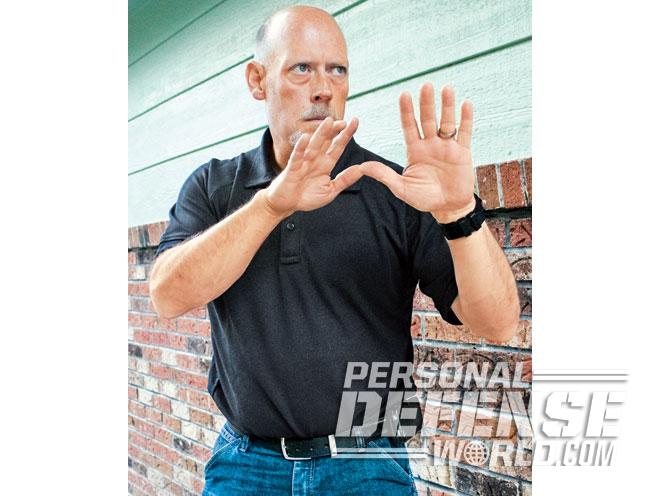
2. The pocket pistol draw begins by protecting your head and neck with your non-gun arm and positioning the gun hand above the pocket. Your gun hand enters the pocket, the thumb is slightly flagged and the fingers are extended and held together.
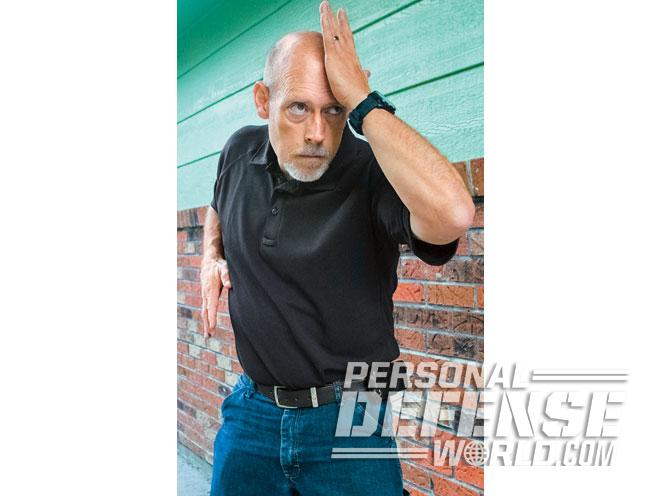
3. Once inside the pocket, the hand is turned counterclockwise to open the pocket mouth and index the web of the hand on the grip.
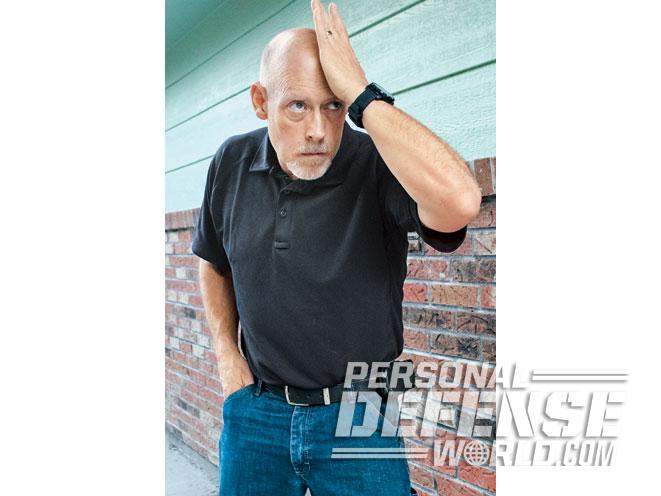
Advertisement — Continue Reading Below
4. After achieving a solid grip, lift the gun straight up and snag the front edge of the holster on the pocket mouth to clear it off the gun.
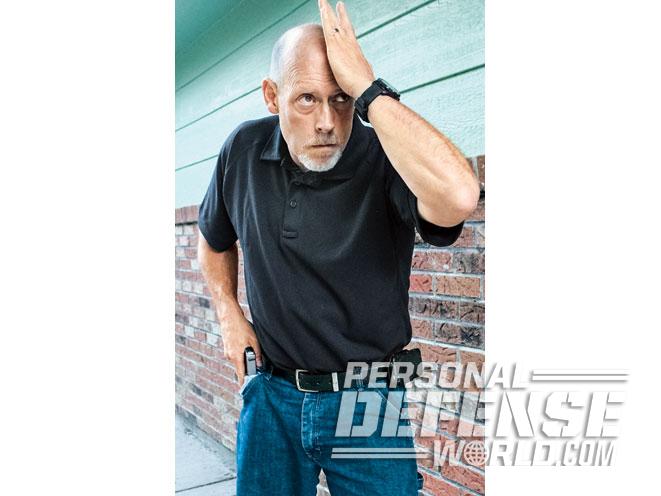
5. Orient the muzzle forward and prepare to fire or transition to an extended position.
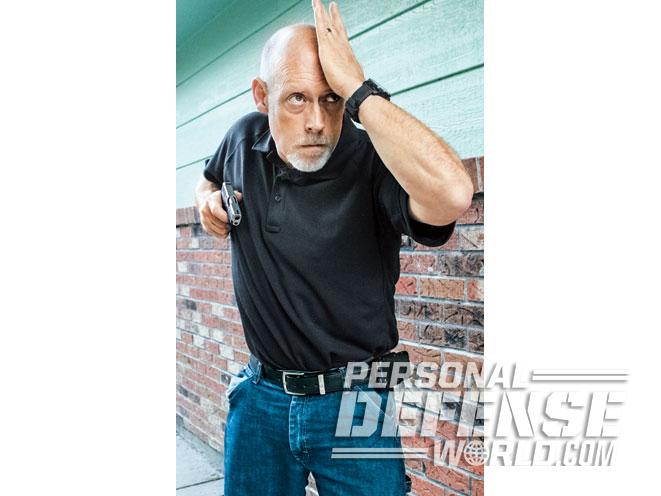
Get A Grip
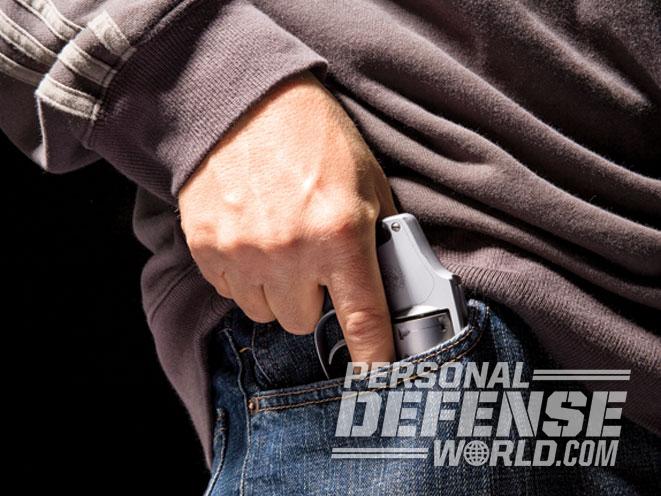
Advertisement — Continue Reading Below
With belt-carried guns, the slowest part of the draw is typically getting the hand to the gun. Once it’s there, achieving a proper pre-draw grip and executing the draw happen pretty quickly. With a pocket-carried pistol, however, the slowest and most difficult part of the process is getting your hand into the pocket and achieving a sound pre-draw grip.
RELATED STORY: Massad Ayoob’s 5 Methods of Concealed Quick-Draw
Getting a grip on a pocket pistol involves extending your fingers as a tight group so they fit into the pocket and then opening them enough to expand the mouth of the pocket so you can wrap them around the gun’s grip. If you go too fast or your timing is off, your fingers slide between the gun and the body side of your pocket and you have no grip.
I discovered a method that helps prevent this and makes getting a solid grip much easier. When you reach into your pocket, angle your hand toward your ulna (the pinky-finger side of your forearm) and flag your thumb slightly so the thumb and fingers enter the pocket at the same time. As soon as they’re in the mouth of the pocket, turn your hand around the axis of your forearm (for right handers, counterclockwise). This turn causes the thumb and fingers to spread the pocket mouth. It aligns the web of the thumb with the backstrap of the pistol. Now, simply drive straight down and achieve a normal grip with a straight trigger finger. You are now ready to draw.
Advertisement — Continue Reading Below
Free And Clear
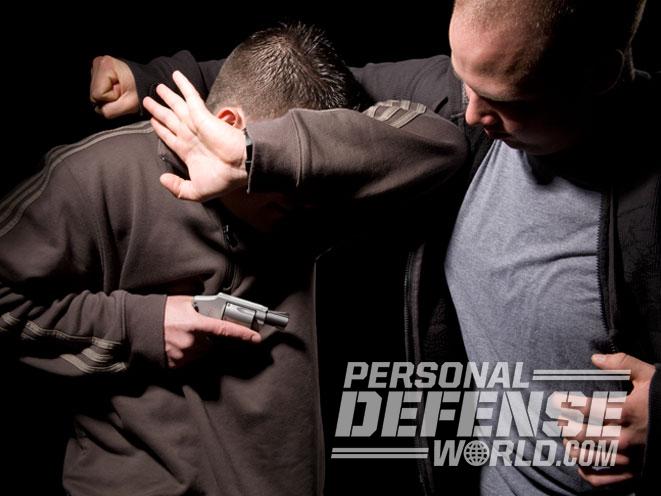
Assuming that you’re carrying your pocket pistol in a pocket holster, your draw angle as you clear the pocket will depend a lot on the style of holster you choose. If it’s the “grippy” kind with the rubberized exterior, you can draw straight up. The holster should stay with the pocket as the gun clears.
If you have a holster with a pocket hook at the rear, your draw angle should err toward the back of your pocket to snag the pocket mouth with the hook as the gun clears. This is often easier said than done, though, since your hand is leading the way and may block the hook.
Advertisement — Continue Reading Below
RELATED STORY: Perfect Pocket Draw – Quick-Draw Essentials
My preferred pocket holster, a Mitch Rosen suede-side-out leather holster, has a small hook on the front edge. By drawing straight up and dragging along the front portion of the pocket mouth, I can reliably get it to snag and remain in the pocket.
No matter which method you use, after the gun clears the pocket, raise it to your ribs, drop your elbow and orient the muzzle forward in a solid weapon-retention position. As the situation allows, proceed from there to other shooting positions. Train hard, stay safe.
























